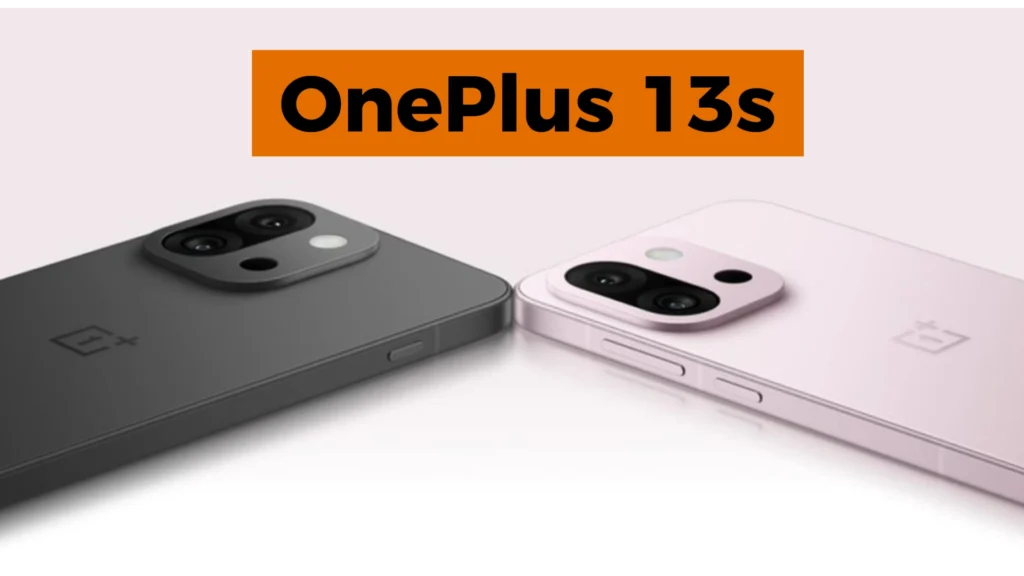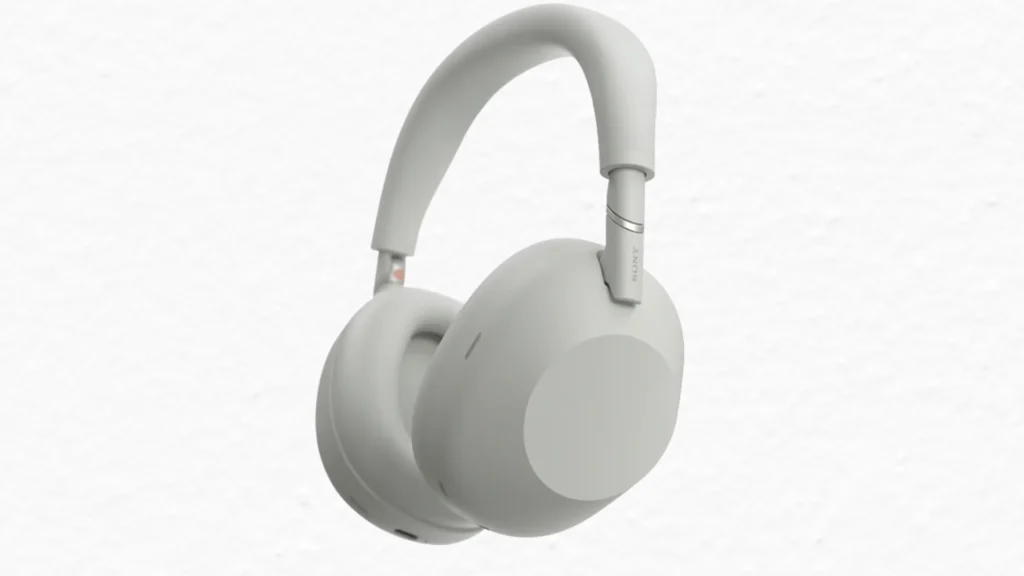Hey there, phone enthusiasts! Are you tired of lugging around a massive smartphone that feels like a brick in your pocket? Well, buckle up, because OnePlus has dropped something fresh: the OnePlus 13s, their first compact flagship aimed at those who want power without the bulk.
Today, we’re diving deep into what makes the OnePlus 13s tick, how it stacks up against its rivals, and whether it’s worth your hard-earned cash. Let’s get started!
When I first picked up the OnePlus 13s, I was struck by how good it feels in the hand. At 150.8 x 71.7 x 8.2 mm and just 185 grams, this phone is a breath of fresh air in a world of oversized flagships.
It’s got that premium vibe with a sleek aluminum frame and a glass front, and the design screams “I’m compact but I mean business.” The 6.32-inch LTPO AMOLED display is a perfect size for one-handed use, and those razor-thin bezels make it feel like you’re holding nothing but screen.
But here’s the hook: OnePlus ditched their iconic Alert Slider for something called the “Plus Key.” Is it a genius move or a misstep? We’ll get to that later. For now, let’s talk about how this phone compares to its competitors, what it does right, and where it stumbles.
Design and Build: A Compact Beauty with an iPhone Vibe
The OnePlus 13s is a looker, no doubt about it. Available in a couple of sleek finishes (think classic black and a cool blue), it’s got a refined, minimalist aesthetic.
The flat aluminum frame and slightly curved edges make it super comfortable to hold, and at 185 grams, it’s light enough to forget it’s in your pocket. The back is glass, but it’s got a matte finish that resists fingerprints better than some rivals, like the glossy-backed Google Pixel 9.
OnePlus claims an IP65 rating for dust and water resistance, which means it can handle splashes and low-pressure water jets but isn’t as dunk-proof as the IP68-rated OnePlus 13 or Samsung Galaxy S25. So, no tossing this one in the pool, but it’ll survive a rainy day or a quick rinse if you drop it in a puddle. I love that OnePlus included a color-matched silicone case in the box—something you don’t always get with other brands.
Now, about that Plus Key. It’s a customizable button that replaces the beloved Alert Slider, a OnePlus staple for years. You can set it to launch the camera, toggle Do Not Disturb, or even kick off AI features like the new Plus Mind AI utility. It’s a cool idea, but it feels like a blatant nod to Apple’s Action Button on the iPhone 16.
The problem? It only supports a single long-press action, which limits its versatility. I miss the satisfying click of the Alert Slider, and I know I’m not alone.
Comparison: Design vs. Rivals
Let’s put the 13s up against some heavy hitters in the compact flagship space: the Xiaomi 15, Oppo Find X8, and Google Pixel 9. The Xiaomi 15 is even smaller (152.3 x 69.7 x 8.1 mm) and lighter (189g), making it a direct competitor for compact phone lovers. Its design is sleek but less distinctive, lacking the bold camera module of the 13s.
The Oppo Find X8, meanwhile, is slightly larger (162.7 x 76.2 x 8.2 mm) but feels more premium with its vegan leather option and sharper edges. The Pixel 9 (152.8 x 72 x 8.5 mm) has a softer, rounded design that’s super ergonomic but picks up fingerprints like nobody’s business.
The 13s stands out for its balanced weight distribution and premium in-hand feel, but the iPhone-esque Plus Key and lack of a truly unique design language make it feel a bit derivative. If you’re after something that screams personality, the Oppo Find X8’s bold aesthetic might edge out the 13s.
Display: Bright, Vibrant, but Not the Brightest
The 6.32-inch LTPO AMOLED display on the OnePlus 13s is a stunner. With a 1.5K resolution (2640 x 1216), 120Hz refresh rate, and Dolby Vision support, it’s crisp, smooth, and perfect for everything from binge-watching Netflix to scrolling through X.
The 2160Hz PWM dimming reduces flicker, which is great for long sessions, and the Aqua Touch feature lets you use it with wet fingers or gloves—a handy perk for those chilly Delhi winters, as noted by 91Mobiles.
Brightness is solid, hitting around 1,600 nits on average and peaking at about 4,500 nits in specific conditions. It’s vibrant indoors and holds up well outdoors, but it’s not quite as eye-searing as the OnePlus 13 (4,500 nits peak) or the Samsung Galaxy S25 (up to 2,600 nits). In direct sunlight, you might need to tilt it a bit to avoid glare, as MySmartPrice pointed out.
The bezels are impressively thin, giving you more screen real estate in a smaller footprint. Compared to the Xiaomi 15’s 6.36-inch display, the 13s feels just as immersive despite the slightly smaller size.
The Pixel 9’s 6.3-inch OLED is brighter (2,000 nits) but doesn’t have the same LTPO 4.1 tech for dynamic refresh rate adjustments, which makes the 13s more power-efficient. The Oppo Find X8’s 6.59-inch display is larger but not as compact, which might be a dealbreaker if you’re prioritizing one-handed use.
Pros of the Display
- Crisp and Smooth: 1.5K resolution and 120Hz refresh rate make everything look buttery smooth.
- Eye-Friendly: 2160Hz PWM dimming reduces strain during long use.
- Versatile: Aqua Touch and glove support are practical for real-world use.
Cons of the Display
- Not the Brightest: Falls short of the OnePlus 13 and Pixel 9 in peak brightness.
- Glare Issues: Can struggle in intense sunlight compared to the Galaxy S25.
Performance: A Beast in a Small Package
Under the hood, the OnePlus 13s is powered by the Qualcomm Snapdragon 8 Elite, the same chip as the flagship OnePlus 13. This thing is a beast, handling everything from heavy gaming to multitasking with ease.
Paired with 12GB of RAM (or 16GB in the higher-end model) and up to 512GB of storage, it’s future-proofed for years to come. Benchmarks like AnTuTu show it scoring close to 3 million, nearly matching the OnePlus 13 and outpacing the Xiaomi 15 in some tests.
I threw everything at this phone—BGMI at max settings, 4K video editing, and a dozen apps open at once—and it didn’t break a sweat. MySmartPrice’s thermal tests confirm it handles heat well, maintaining 81% of peak performance under stress.
Compared to the Oppo Find X8 and Xiaomi 15, which also use the Snapdragon 8 Elite, the 13s holds its own, though the larger chassis of the Find X8 might give it a slight edge in sustained performance due to better heat dissipation.
The Pixel 9, with its Tensor G3 chip, lags behind in raw power but makes up for it with Google’s optimized software for AI tasks. If you’re a gamer or power user, the 13s is a better pick than the Pixel 9, but it’s neck-and-neck with the Xiaomi 15 and Find X8.
Pros of Performance
- Top-Tier Power: Snapdragon 8 Elite delivers flagship-level performance.
- Thermal Efficiency: Stays cool even under heavy loads.
- Future-Proof: 12GB or 16GB RAM options ensure longevity.
Cons of Performance
- Gaming Throttle: OxygenOS caps some games at 60fps, which is a bummer for high-refresh-rate fans.
- No USB 3.2: Sticks with USB 2.0, which slows down data transfers compared to rivals like the Xiaomi 15.
Software: OxygenOS 15 with a Side of AI
The OnePlus 13s runs OxygenOS 15, built on Android 15, and it’s a mixed bag. On one hand, it’s smooth, clean, and bloatware-free, which I love. OnePlus has refined the software experience, adding cool features like Live Alerts (a Dynamic Island clone that’s actually pretty useful) and Open Canvas for multitasking.
Live Alerts let you tap the selfie camera area to check timers or notifications, and it’s more intuitive than Apple’s version.
AI is a big focus here, with features like AI Plus Mind (tied to the Plus Key), AI VoiceScribe for transcribing calls, and AI Reframe for photo editing.
I was impressed with AI Best Face 2.0, which fixed group shots where someone blinked, and Gemini Live made video calls feel interactive, like getting fashion advice from a friend. But here’s the catch: some AI features, like photo editing, require an internet connection, which can be annoying if you’re offline.
Compared to the Pixel 9’s Google-optimized software, OxygenOS 15 feels less AI-centric but more customizable. The Xiaomi 15’s HyperOS is similarly smooth but leans heavier on animations, which some might find overdone. The Oppo Find X8’s ColorOS is almost identical to OxygenOS (no surprise, since Oppo and OnePlus are sister brands), but it has a slight edge with more polished animations.
Pros of Software
- Smooth and Clean: OxygenOS 15 is fast and bloatware-free.
- Innovative Features: Live Alerts and Open Canvas enhance usability.
- AI Goodies: VoiceScribe and Best Face 2.0 are genuinely useful.
Cons of Software
- Buggy at Times: Some users report glitches, like an awkward DND mode.
- Cloud-Dependent AI: Photo editing features need an internet connection.
- No Alert Slider: The Plus Key doesn’t fully replace the iconic slider.
Camera: Good, but Not Great
The OnePlus 13s sports a dual 50MP camera setup: a main sensor and a 2x telephoto lens. Noticeably absent is an ultrawide lens, which is a head-scratcher for a flagship. The main 50MP sensor (f/1.6) delivers crisp, vibrant shots in daylight with balanced colors.
The 2x telephoto is decent for portraits but lacks optical image stabilization (OIS), which can lead to shaky shots in low light. The 32MP selfie camera with autofocus is a step up from the 13R, but it struggles with skin tone accuracy in tricky lighting.
Compared to the OnePlus 13, which has a triple camera setup with a standout ultrawide, the 13s feels like a downgrade. The Xiaomi 15 and Oppo Find X8 both offer more versatile camera systems, with ultrawide lenses and better low-light performance thanks to Leica and Hasselblad tuning, respectively. The Pixel 9, with its AI-driven photography, blows the 13s out of the water for consistency and night shots.
Pros of the Camera
- Solid Daylight Shots: Vibrant and detailed photos in good light.
- AI Editing: Tools like AI Reframe and Best Face 2.0 add value.
- Good Selfies: 32MP front camera with autofocus is great for social media.
Cons of the Camera
- No Ultrawide: Missing a key lens that rivals offer.
- No OIS on Telephoto: Shaky shots in low light.
- Inconsistent Colors: Selfies can look off in some conditions.
Battery Life: A Compact Champion
Here’s where the OnePlus 13s shines. Its 5,850mAh battery is massive for a compact phone, and it easily lasts two days with moderate use. Even with heavy gaming, streaming, and hotspot use, I got through a full day with 20-25% left, as WIRED noted with the OnePlus 13R.
The 80W SuperVOOC charger (included in the box, thank you, OnePlus!) juices it up from 0 to 100% in about 36 minutes, faster than the Pixel 9 (75 minutes) and Galaxy S25 (45W charging).
The silicon-carbon battery tech is a game-changer, offering more capacity in a smaller size compared to the OnePlus 12’s 5,400mAh battery. However, it’s a step down from the 6,260mAh battery in the Chinese OnePlus 13T.
Compared to the Xiaomi 15 (4,610mAh) and Oppo Find X8 (5,630mAh), the 13s has a clear edge in endurance. The Pixel 9’s 4,700mAh battery doesn’t come close.
Pros of Battery Life
- Marathon Runner: Two-day battery life with moderate use.
- Blazing Fast Charging: 80W SuperVOOC fills it up in 36 minutes.
- Included Charger: No need to buy one separately.
Cons of Battery Life
- No Wireless Charging: A surprising omission for a 2025 flagship.
- Smaller than 13T: Indian version has a smaller battery than the Chinese model.
Pricing and Value
The OnePlus 13s starts at $640 for the 12GB/256GB model and $699 for the 12GB/512GB. It’s pricier than the OnePlus 12R but undercuts the OnePlus 13 ($900) and rivals like the Galaxy S25 ($1,299) and Pixel 9 Pro XL ($1,099).
It’s a solid value for a compact flagship, but the Xiaomi 15 and Oppo Find X8 are close competitors with better cameras.
The lack of wireless charging, an ultrawide lens, and USB 3.2 feels like a compromise at this price. If you prioritize battery life and performance over photography, the 13s is a steal. But if cameras are your thing, the Xiaomi 15 or Pixel 9 might be a better bet.
Verdict: Who’s This Phone For?
The OnePlus 13s is a love letter to compact phone fans who want flagship power without the bulk. Its stunning display, blazing performance, and incredible battery life make it a standout. But the missing ultrawide lens, lack of wireless charging, and the controversial Plus Key hold it back from perfection. Compared to the Xiaomi 15, Oppo Find X8, and Pixel 9, it’s a strong contender but not the undisputed champ.
If you’re someone who values a pocketable phone with marathon battery life and smooth software, the 13s is a fantastic pick. Photographers or those wanting a more versatile camera system might want to look elsewhere.
So, is the OnePlus 13s worth the hype? If you’re after a compact powerhouse, it’s definitely worth considering. Just don’t expect it to outshine every rival in every category. What do you think—does the 13s sound like your kind of phone? Let me know in the comments!



